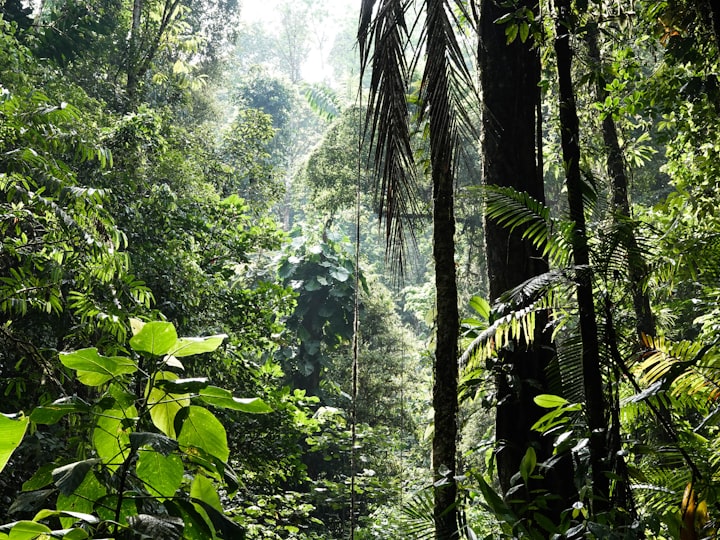The Accidental Ecologist: Dr. Dolittle's Whimsical Path to Unveiling Nature's Secrets
A Comical Prelude to Understanding the Symphony of Biodiversity

There I was, Dr. Dolittle, quite the regular chap with an extraordinary ability to converse with animals. It's a peculiar tale, really, of how I became so enamored with the dynamics of landscapes and their influence on biodiversity. And it all began with a rather amusing misunderstanding involving a mischievous monkey, a perplexed parrot, and a series of whimsically chaotic events.
One sunny afternoon, as I was attempting to enjoy a peaceful cup of tea in my garden, I was abruptly interrupted by Marvin, a monkey known for his knack for creating mischief. Marvin, with a sparkle of devilry in his eyes, had somehow managed to acquire a map. Not just any map, mind you, but a wildly inaccurate one, depicting fantastical lands with chocolate rivers and popcorn mountains.
Intrigued and slightly amused, I decided to indulge Marvin’s imagination. I began explaining the real world’s landscapes, but in the language of animals. This, of course, resulted in a hilariously convoluted game of telephone. By the time the story reached Patricia, the scholarly parrot, the narrative had transformed into a bizarre fable about mountains that moved like caterpillars and rivers that sang opera.
Patricia, who prided herself on her intellectual prowess, was thoroughly baffled. She demanded an explanation, and I found myself embroiled in a comically serious debate with a parrot over geological processes. You see, in my attempt to clarify, I made analogies likening tectonic plate movements to a dance of elephants and the erosion of landscapes to the meticulous work of ants. This only added to the confusion, as Patricia couldn't fathom elephants engaging in ballet or ants wielding tiny construction tools.
The situation escalated when a congregation of animals gathered, each adding their own fanciful interpretations. The garden was abuzz with chattering squirrels, debating birds, and even a philosophizing tortoise. It was a cacophony of curious creatures all trying to make sense of the world’s geography.
Realizing the need to set the record straight, I embarked on a mission to educate my animal friends about the true wonders of our planet's landscapes. But how does one explain complex scientific concepts to a diverse audience of animals, each with their own unique perspective and understanding?
I decided to use their natural habitats and behaviors as examples. I spoke of how mountain ranges like the Himalayas affect climate and wildlife, using the snow leopards and yaks as examples. I described how river systems shape environments, illustrating with the busy lives of beavers and otters. Each explanation was tailored to the animals' experiences, making the science relatable and engaging.
The endeavor turned into a series of uproarious misadventures. Imagine trying to demonstrate plate tectonics with a group of over-enthusiastic moles who ended up creating a labyrinth of tunnels, much to the chagrin of my garden! Or picture explaining the concept of nutrient cycles with a troop of squirrels who took it upon themselves to redistribute nuts based on their newfound ecological 'expertise'.
Throughout these escapades, I found myself becoming deeply fascinated with the subject. What started as a comedic attempt to educate my animal companions led to a profound appreciation for the intricacies of how landscapes shape the biodiversity of life. I saw the world through a new lens, one that viewed mountains, rivers, and valleys as dynamic characters in the story of Earth's life.
As I narrated these tales to my animal friends, I realized the importance of sharing this knowledge with a wider audience. And thus, the idea of writing an article was born. It was a way to bridge the gap between scientific understanding and the general public's curiosity, much like how I bridged the gap between human knowledge and animal wonder.
In the end, the journey to write "Nature’s Rhythm: How Landscape Dynamics Shape Life’s Biodiversity" was as serendipitous as it was enlightening. It was a path paved with laughter, learning, and the lively conversations of a garden full of animals, each contributing to my understanding in their own whimsical way.
So there you have it, the quirky backstory of how a simple tea-time turned into a comedic, yet insightful exploration of our planet's landscapes. It's a reminder that sometimes, the most profound insights come from the most unexpected of places – in my case, from the chattering of animals in a garden teeming with life's little wonders.
About the Creator
ScienceStyled
Exploring the cosmos through the lens of art & fiction! 🚀🎨 ScienceStyled makes learning a masterpiece, blending cutting-edge science with iconic artistic styles. Join us on a journey where education meets imagination! 🔬✨






Comments (1)
We all have times where nature calls us to the field. And once we do, it's usually a pleasurable adventure.